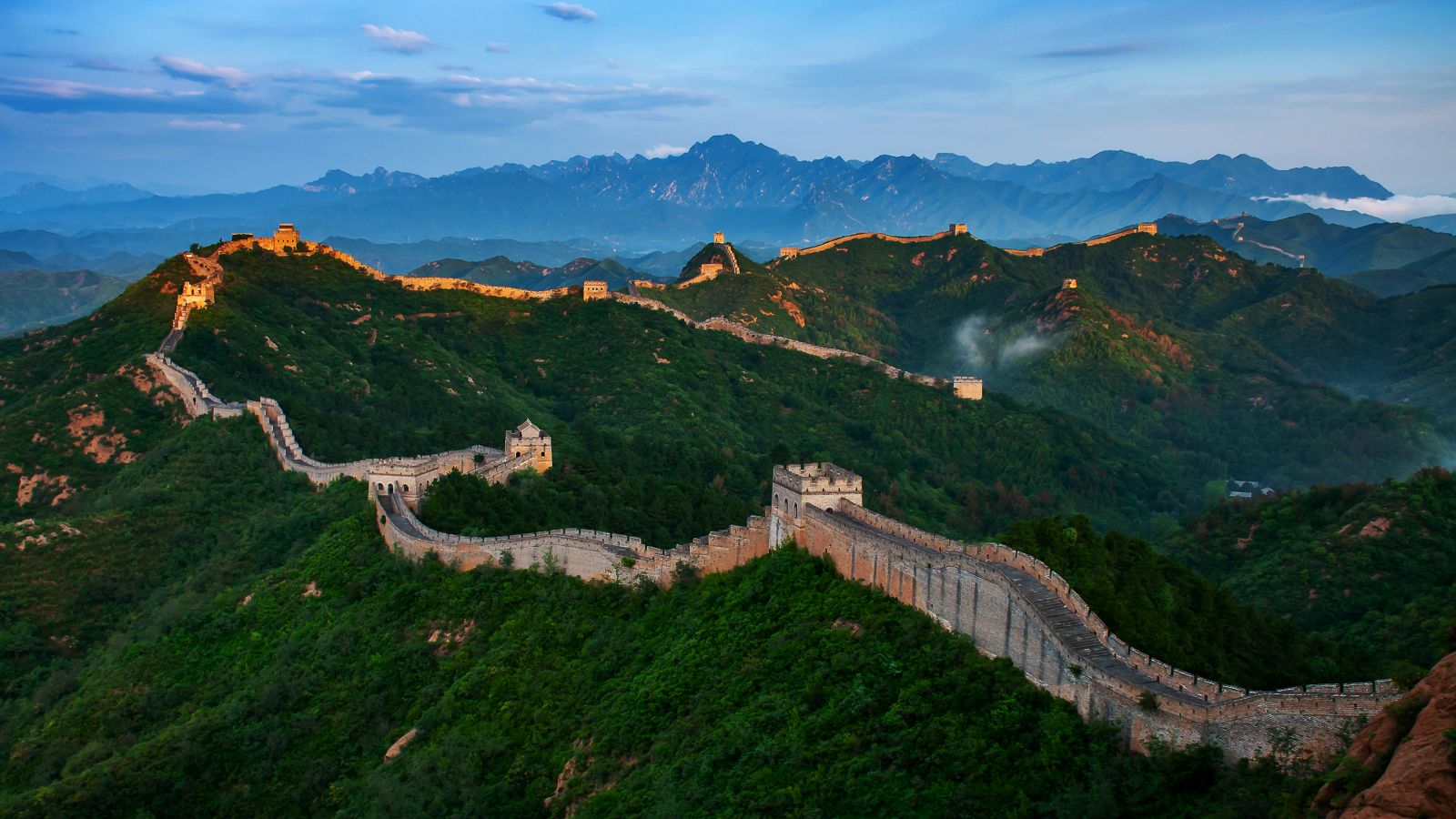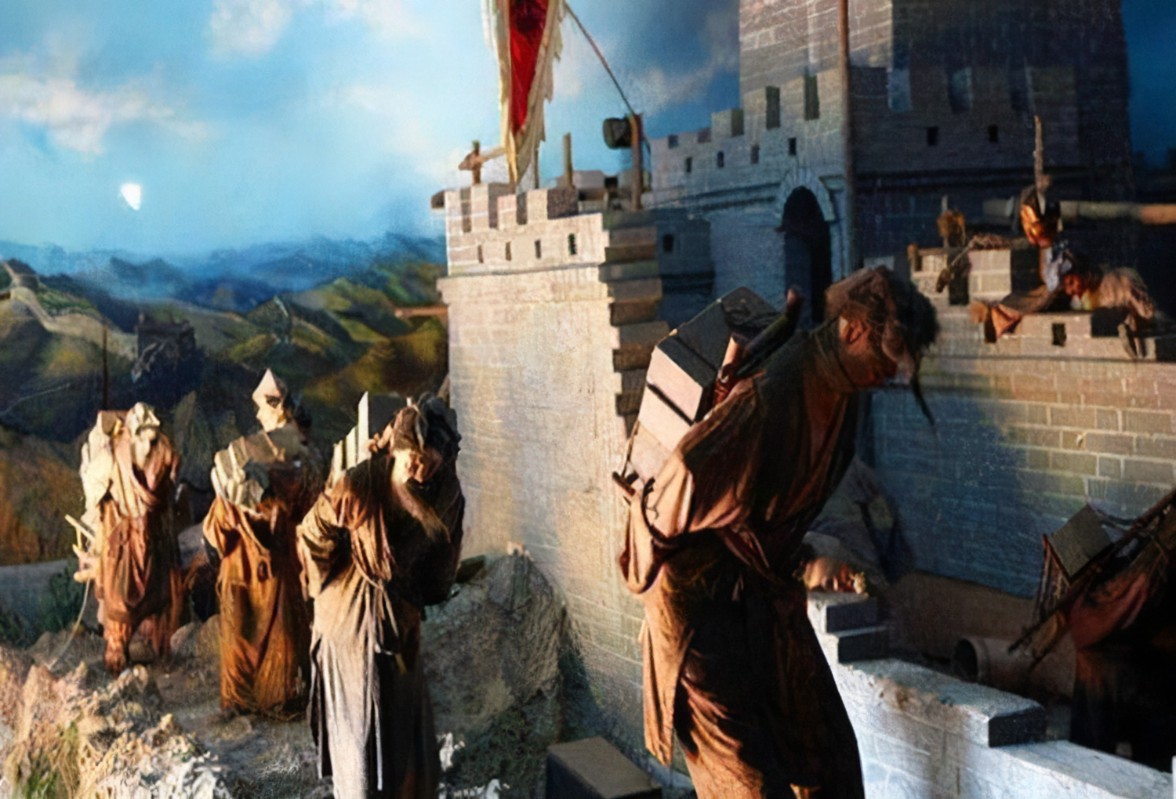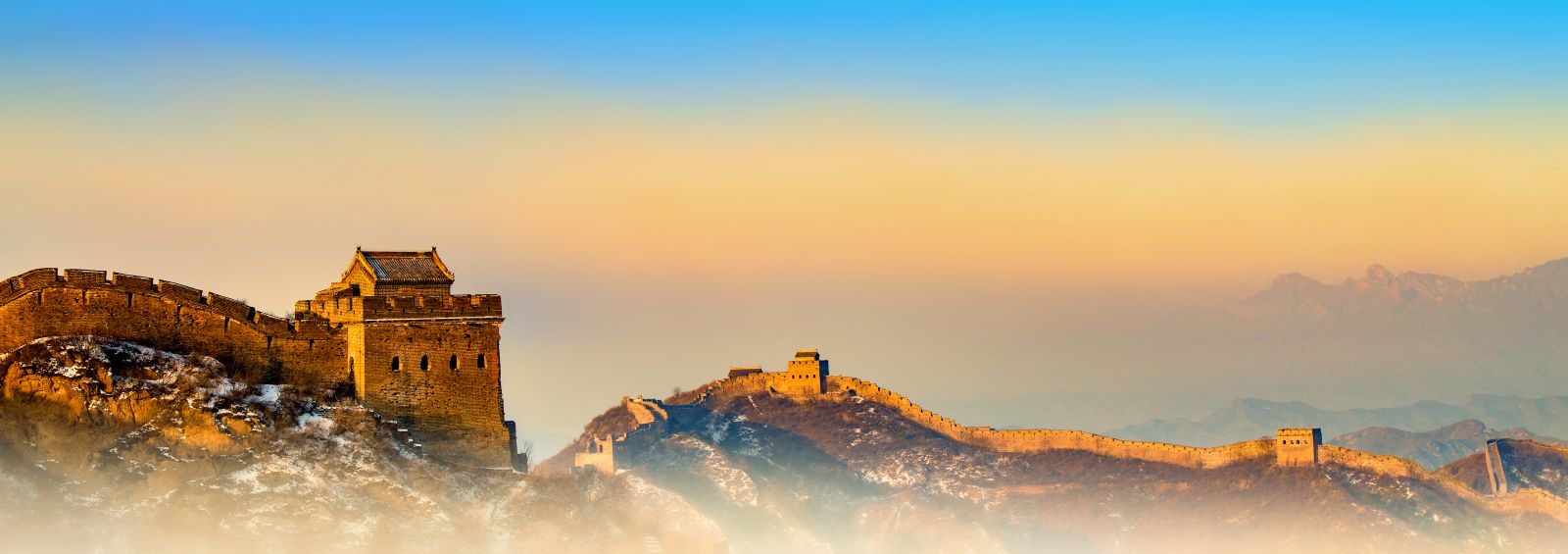The First Emperor of Qin sent people to build the Great Wall to ward off enemies from outside and unite the Chinese nation. In such a way, the Chinese people and all ethnic groups would be emotionally linked together. Only in this way could China be preserved. General information about the Great Wall is listed first as follows.
The Great Wall of China, “Wanli Changcheng” (in Chinese Pinyin, meaning “10,000-Li Long Wall”), serves as an extensive bulwark erected in ancient China, as well as one of the greatest building-construction projects ever undertaken in northern China.

The Great Wall actually consists of numerous walls, many of which parallel to each other, built over some two thousand years across northern China. The Great Wall is not a single isolated wall, but a defensive system with the wall as the main body and a large number of barriers, pavilions, and landmarks.
The history of the construction of the Great Wall can be traced back to the Western Zhou Dynasty (1046 BC - 771 BC). During the Spring and Autumn Period (770 BC - 221 BC), the states fought for supremacy and defended each other. That is the time when the construction of the Great Wall entered its first construction climax, but the length of construction was relatively short at that time.

After the Qin Dynasty (221 BC - 207 BC) unified China, Qin Shi Huang (259 BC - 210 BC), the First Emperor of Qin sent people to repair the Great Wall, which became known as the Great Wall. The Ming Dynasty (1368 - 1644) was the last dynasty to overhaul the Great Wall, and most of it that people see today was built at this time.
P2
The most extensive and best-preserved version of the wall dates from the Ming Dynasty and runs for some 8,850 km (5,500 miles) east to west from Mount Hu near Dandong, southeastern Liaoning Province, to Jiayu Pass west of Jiuquan, northwestern Gansu Province. It is more than 21,000 km long.

This wall often traces the crest lines of hills and mountains as it snakes across the Chinese countryside, and about one-fourth of its length consists solely of natural barriers such as rivers and mountain ridges.
Nearly 70 percent of the total length is constructed wall, with the small remaining sections constituting ditches or moats. Although lengthy sections of the wall are now in ruins or have disappeared completely, it is still one of the most remarkable structures all over the world. The Great Wall was designated a UNESCO World Heritage site in 1987.
Rich experience has been obtained in the construction process of the Great Wall. The construction has last for more than two thousand years.

In the first place, in the layout, Qin Shi Huang summed up the crucial experience of “choose the favorable terrain for better defense” when he sent people to build the Great Wall.
Sima Qian (a Chinese historian of the Western Han Dynasty) wrote such a building experience into the book of Records of the Grand Historian. Afterwards, the construction of the Great Wall was in accordance with this principle for later dynasties. Such building experience became a basis for military defense accordingly.
All the construction of the passes has the same feature. The passes situate between mountains and valleys, or the river turning point, or some strongholds. As thus, it cannot only be danger-free but also save manpower and materials.
Likewise, the building of castles or beacon towers also has something with the terrain. As for the construction of city walls, the terrain plays a much more vital role. For example, both Juyong Pass and Badaling Great Wall were built along the back of the mountains.
Some sections are very steep when viewed from the outside of the city walls, while the inside is very different, which has the effect of “easy to defend while difficult to attack”. In Liaoning Province, there exists a kind of splitting mountain wall, which means that cliffs are split slightly to form a natural protective barrier. In some places, cliffs, rivers, and lakes are completely used as natural barriers.
The Great Wall is not just a rampart, but a complete defense engineering system composed of walls, forts, battalion sites, guard posts, passes, castles, beacon towers, and other fortifications. This defense engineering system is commanded and controlled by military command systems at all levels.
The walls, which are the major part of the Great Wall, are filled with soil and gravel. They are 7.8 meters high on average, with some sections reaching 14 meters high. The construction of each wall should meet the needs of the hill appearance.

If the hills are steep, the walls are low; similarly, if the hills are flat, the walls are high. Moreover, higher walls can be seen in those critical places, while lower walls spread over other places. The wall body is the main part of the defense against the enemy. The width of the foundation is about 6.5 meters so as to ensure two wagons pass smoothly.
Serving as the main part of this defense project, the walls were built in the mountains or plains according to the terrain and the needs of the defense function of the building.
In plains or important passes, the building is very tall and strong. While at high or steep places, the building is relatively low and narrow to save manpower and cost, for example, the Juyong Pass and Badaling Great Wall.
As an information delivery system, it is the oldest but effective method of message delivery. Beacon towers are generally about 10 miles apart. The sections built in the Ming Dynasty also had a distance of about 5 miles. Ancient border alarm has two signals, in case of the enemy situation, smoke during the day, fire setting at night. It also ensures the security of the diplomatic envoys, and can also provide accommodation, food for horses, and other services.
Castles can be divided into different levels according to their roles, and the distance between them is not very far. There are offices, barracks, houses, and temples generally. Some were built where the terrain is gentle and easy to cultivate.

The pass is the most concentrated defensive stronghold along the Great Wall. The locations of the passes are of great importance, and they were all chosen on well-defended terrain to defend against powerful invaders with very few troops.
Along the Great Wall, there are many passes, large or small. There are a lot of small passes near some large ones. For example, there are more than ten small passes near Shanhaiguan Pass, which together constitute the defense engineering construction system of the Great Wall.
Concerning Shanhaiguan Pass, it has been known as the “First Pass Under Heaven” since ancient times. It was announced by the State Council as the first batch of national key cultural relics protection lists. It is a major pass of the Great Wall, with strategic importance at its east coast beginning. The pass of Shanhaiguan is a square, with a perimeter of around 4 kilometers long. The walls reach a height of 14 meters and are 7 meters thick.

From the above description, it is obvious to know that the construction of the Great Wall acts up to the harmony with nature. Specifically, it depends on the terrain. The Great Wall winds like a powerful Chinese dragon with its head and tail situating in vital places. Only in this way can the Chinese nation last forever. The Great Wall has since become the epitome of the Chinese nation standing in the east and the symbol of an ancient civilization. So, it can be said to be the largest Feng Shui building in China.
What distinguishes Chinese culture from the rest of the world is harmony. The great Confucianism, which advocates harmony, has ruled China for thousands of years. A family requires concord, a kingdom needs to be harmonious, and so does a wall. The Great Wall is something unique to China. Only Chinese people can build it. Why is that? This is a characteristic of Chinese culture. What does the Great Wall really mean? It is used for defense, for space division, for flood fighting, as well as for sand blocking.
From the perspective of Feng Shui, it is a bad practice to block. The various doors on the wall are used to bring in good Qi (Qi is a Feng Shui term and the foundation of all things, which includes Yin and Yang, the two opposing principles in nature standing for negative and positive respectively). However, as far as the overall environment is concerned, a separate wall only serves as a barrier for the capital, but not for the whole country. Therefore, in order to achieve national harmony, a bigger and stronger wall is necessary. That is the result of the Great Wall.
Taking the ancient times as an example, threats which the Chinese people face always came from the northern nomadic people. So when the Yin Qi comes from the north, the wall needs to be built in the north.
For thousands of years, Chinese people have attached great importance to the sense of security that the Great Wall gives them. In their eyes, the presence of the wall means security; when the wall is gone, the state is gone, and so is the home.
Commonly, the Chinese people are used to placing their hope on a certain person or a thing in particular, just like the rest of Chinese culture, which are in their blood. Once this kind of hope disappears, people seem to lose themselves and do not know how to do. With this huge wall in the north of China, people will feel safe. That’s how the Great Wall occupies such an essential role in China. The look formed by the majestic momentum contributes to its masculine beauty.
Importantly, because it was built on a ridge, the clouds act as a strange foil to the Great Wall’s lofty image. In spring, the Great Wall is mist-shrouded by the clouds, creating a splendid scene. Besides, it is more charming and attractive with mountains surrounded.

The white clouds are above the Great Wall, which connects the momentum of the Great Wall with the universe. The Great Wall has become the boundary between heaven and earth and has the fantastic function of connecting heaven and earth. The wall absorbs the essence of heaven and earth and forms the combination of heaven, earth, and human, thus becoming the man-made protector of Beijing. This kind of masculinity consolidates the development of the northern kingdom. The Great Wall, like a strong man, raises his head high and guards the country.
Therefore, the Great Wall is a symbol of the Chinese nation standing proudly, a typical description of the Chinese people, and the largest geomantic architecture in China. With the protection of the Great Wall, the Chinese nation will stand proudly in the world, and the figure of China will certainly be even higher because we are standing on the shoulders of the “Great Wall Giant”.
Since the day it was constructed, the Great Wall has made great contributions to the unity of the Chinese nation. For more than 2,000 years, no one has been able to look down upon the Great Wall, so it is impossible to divide the Chinese nation.
To the Chinese people, the Great Wall is a symbol of will and courage, symbolizing the great solidarity and power of the Chinese nation. “March of the Volunteers” sings the praises of the Great Wall in people’s minds: diligence, wisdom, perseverance, and national spirit.
It also enhances the pride of the Chinese nation, self-confidence, and patriotic enthusiasm. People always feel a sense of patriotism when they hear or sing the national anthem because the Great Wall can strike a chord in the hearts of the Chinese people.
In 1971, the 26th session of the United Nations General Assembly adopted the restoration of the lawful status of the People’s Republic of China. At the same time, the gift given by China to the United Nations General Assembly is a large tapestry of the Great Wall.
That once again shows that the Chinese people and the government have marked the Great Wall as a symbol of the Chinese glorious culture for thousands of years. This symbolic significance has also been recognized and accepted by the world.
